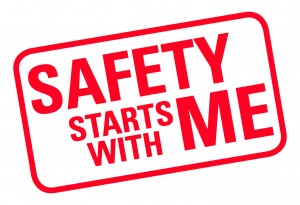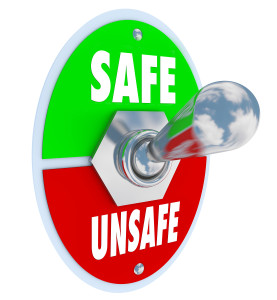 Safety is everyones responsibility!
Safety is everyones responsibility!
As an employee, you should:
- Learn to work safely and take all rules seriously.
- Recognize hazards and avoid them.
- Report all accidents, injuries and illness to your supervisor immediately.
- Inspect tools before use to avoid injury.
- Wear all assigned personal protective equipment.
On the other hand, it is managements responsibility to:
- Provide a safe and healthy workplace.
- Provide personal protective equipment.
- Train employees in safe procedures and in how to identify hazards.
Everyone must be aware of potential hazards on the job:
- Poor housekeeping results in slips, trips and falls.
- Electricity can cause shocks, burns or fire if not handled properly.
- Poor material handling may cause back problems or other injuries.
- Tools and equipment can cause injuries if guards or protective devices are disengaged.
Always use the protections that are provided on the job:
- Guards on machines and tools keep body parts from contacting moving equipment.
- Insulation on electrical equipment prevents burns, shock and fire.
- Lockout/tagout assures equipment is de-energized before it is repaired.
- Personal protective equipment shields your body from hazards you may face on the job.
In case of emergency:
- Understand alarms and evacuation routes.
- Know how to notify emergency response personnel.
- Implement a procedure for leaving the scene safely so emergency personnel can do their job.
- Wipe up spills promptly and correctly.
Safety benefits everyone. With fewer injuries, a business can be more productive and profitable. By incorporating safety rules, employees avoid injury as well as illness from exposure to hazardous substances.
via Behavioral Safety – Who Is Responsible for Safety? | Safety Toolbox Talks Meeting Topics.


